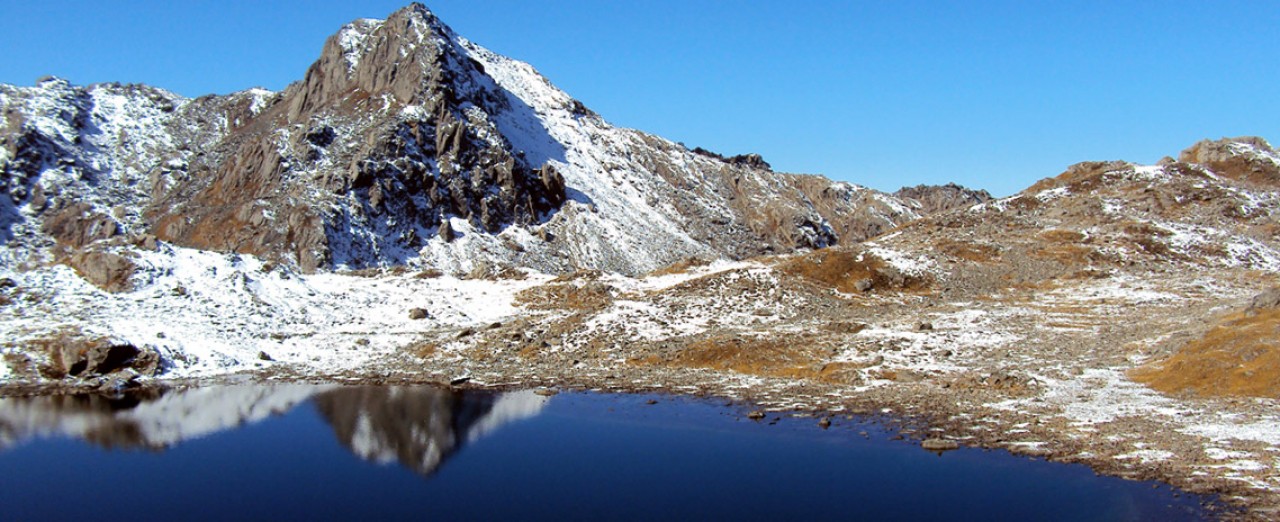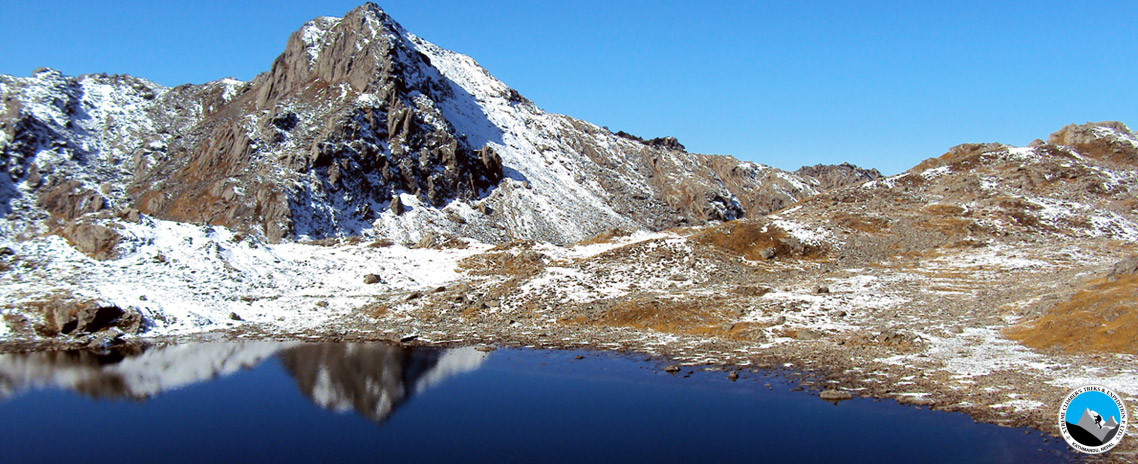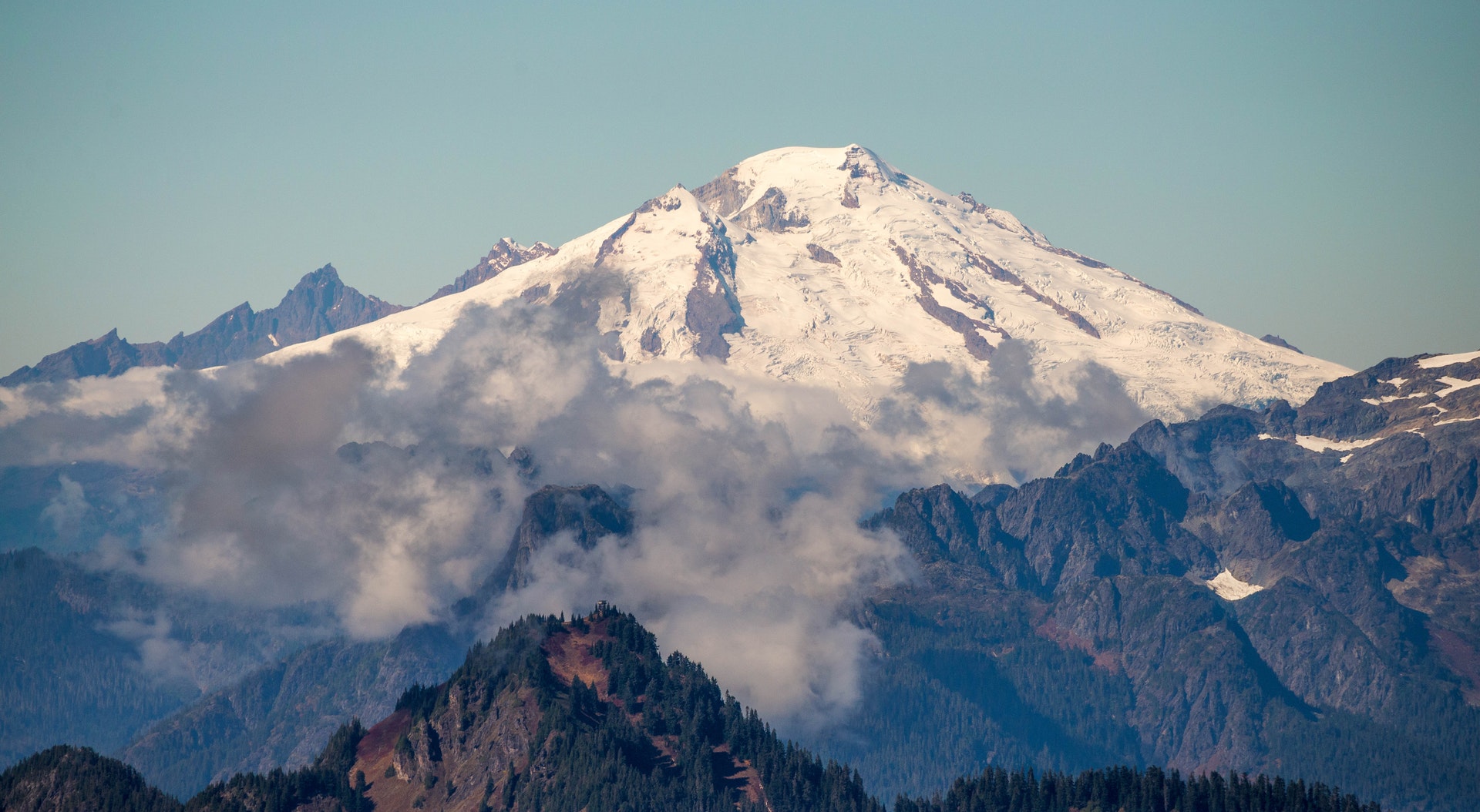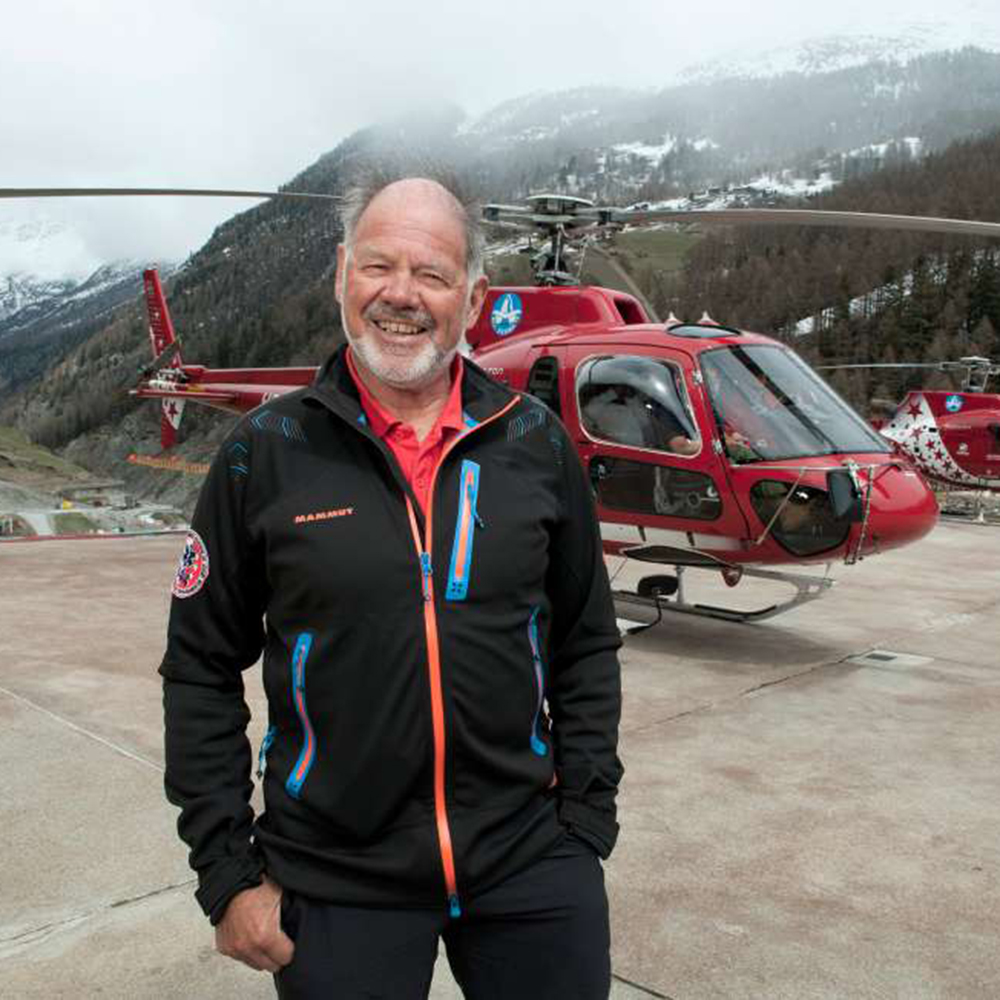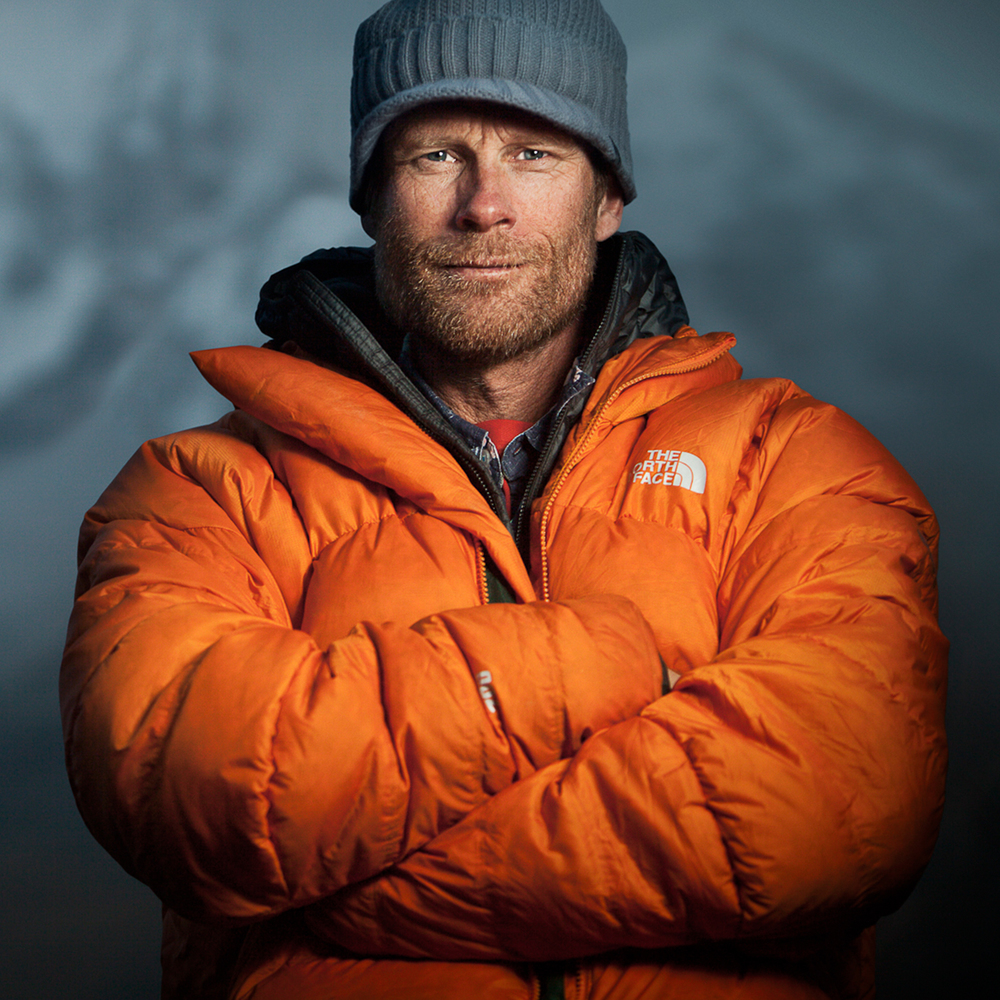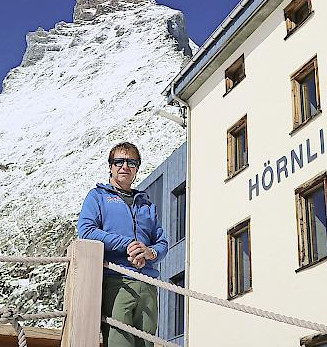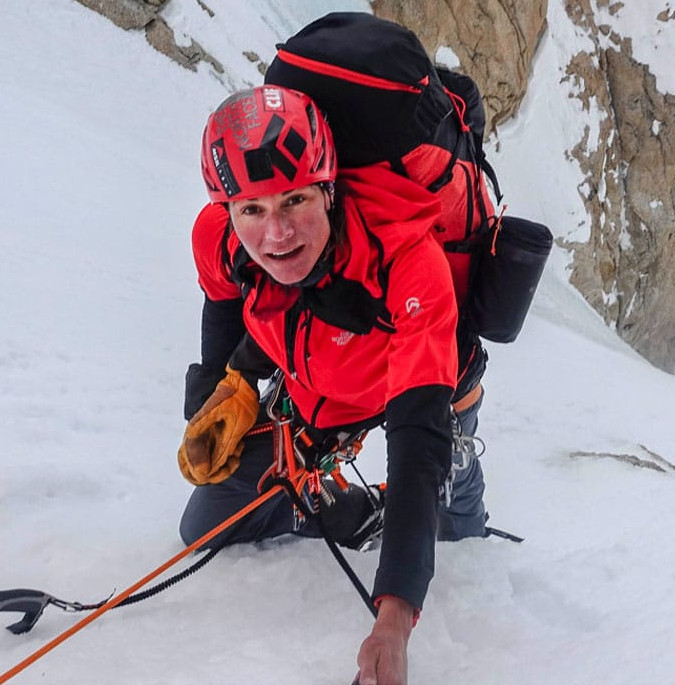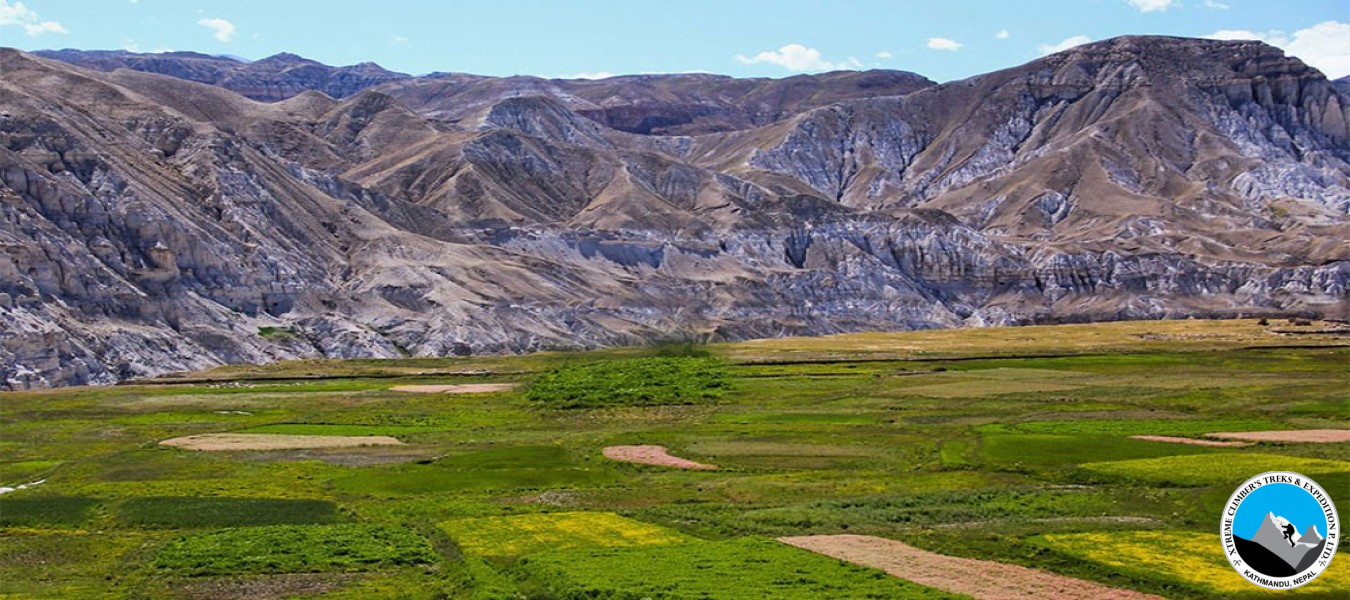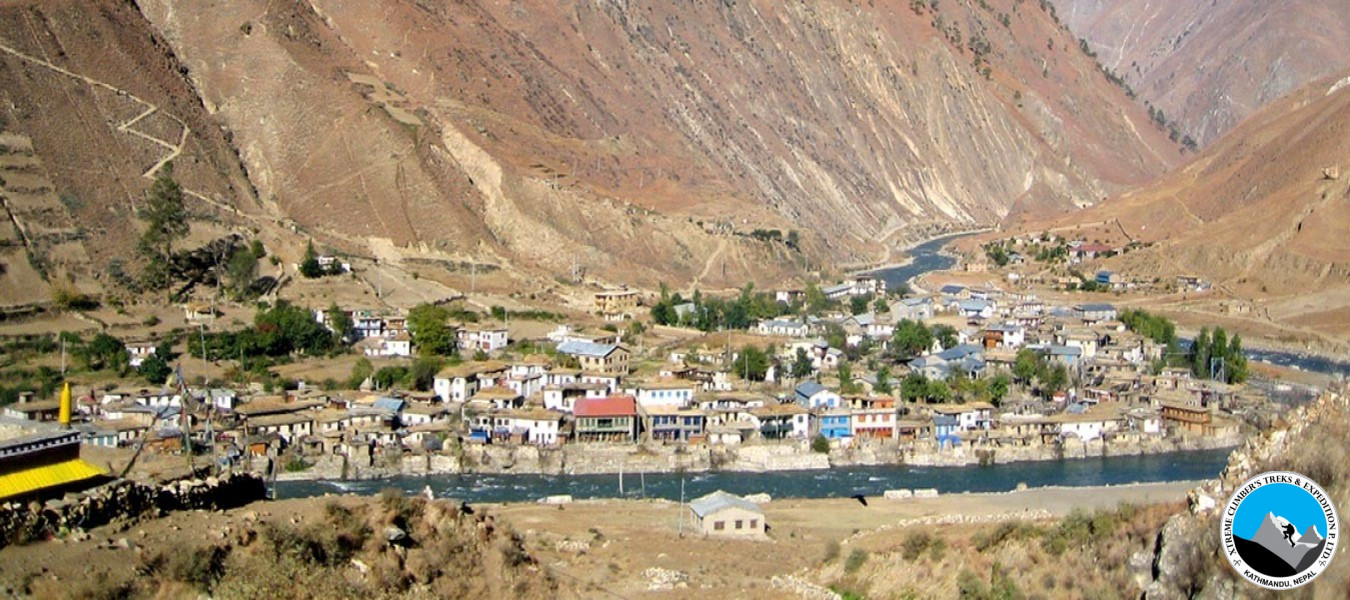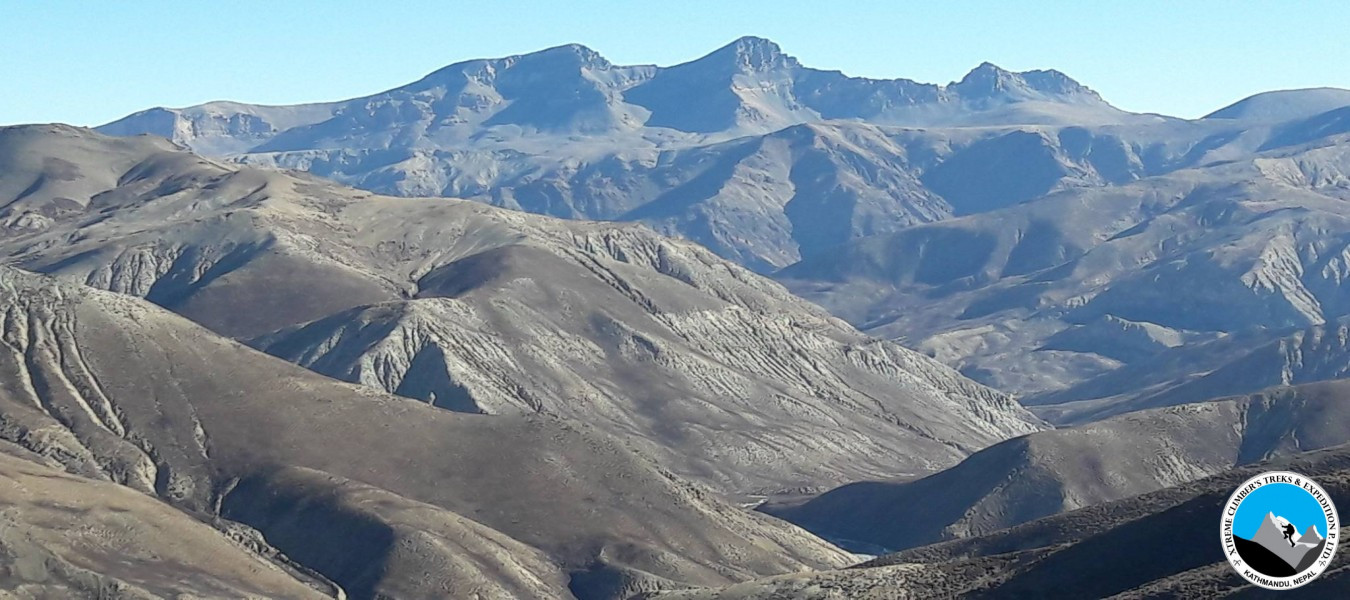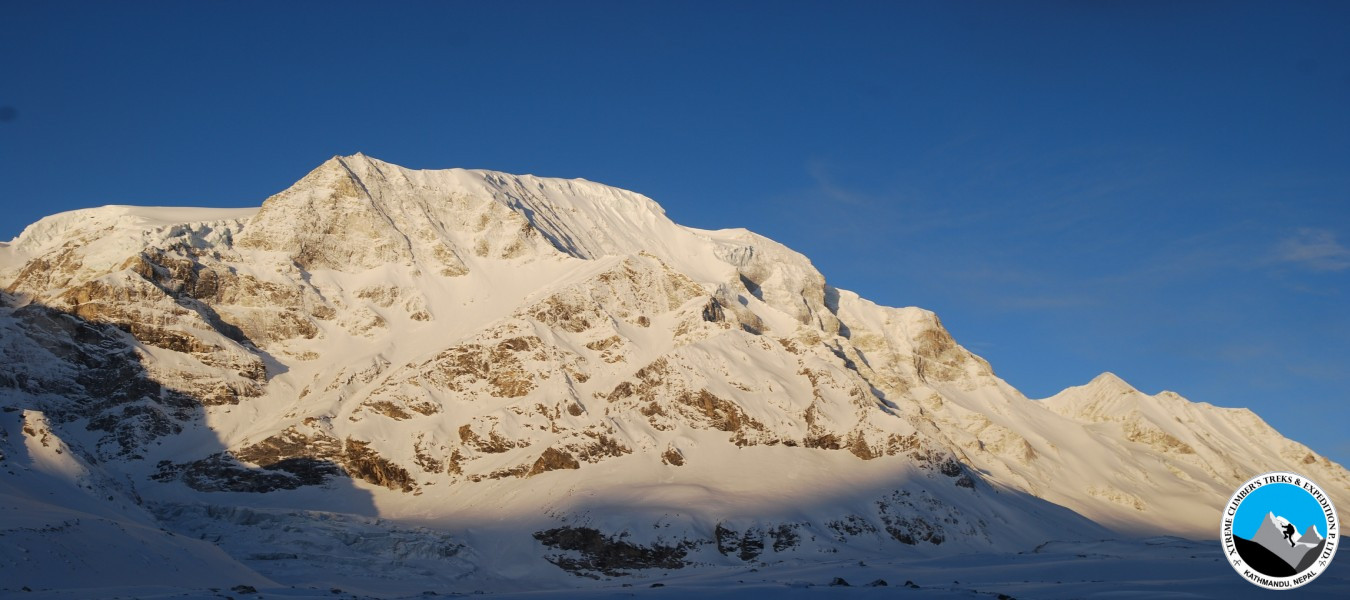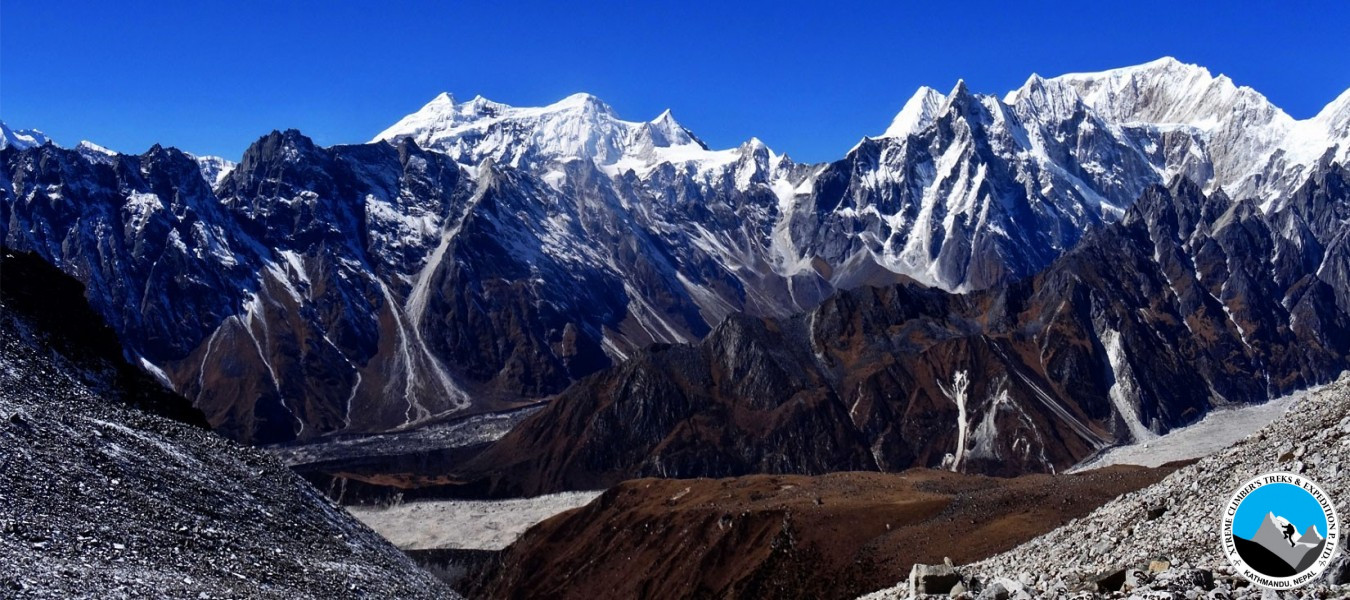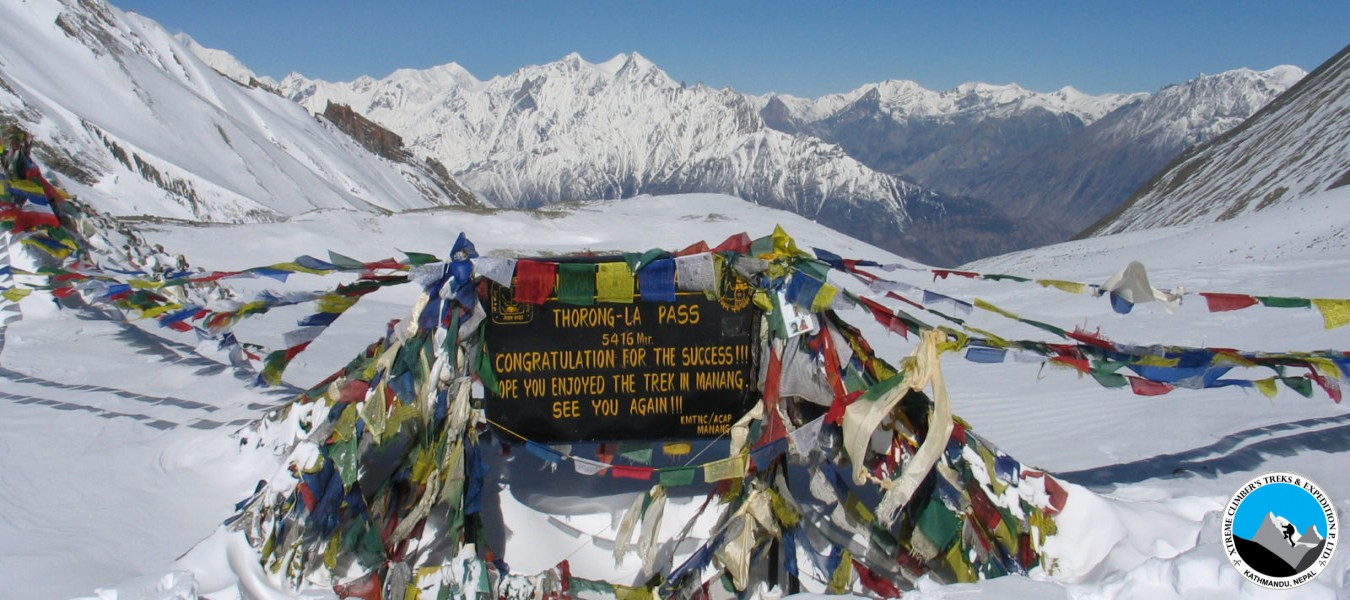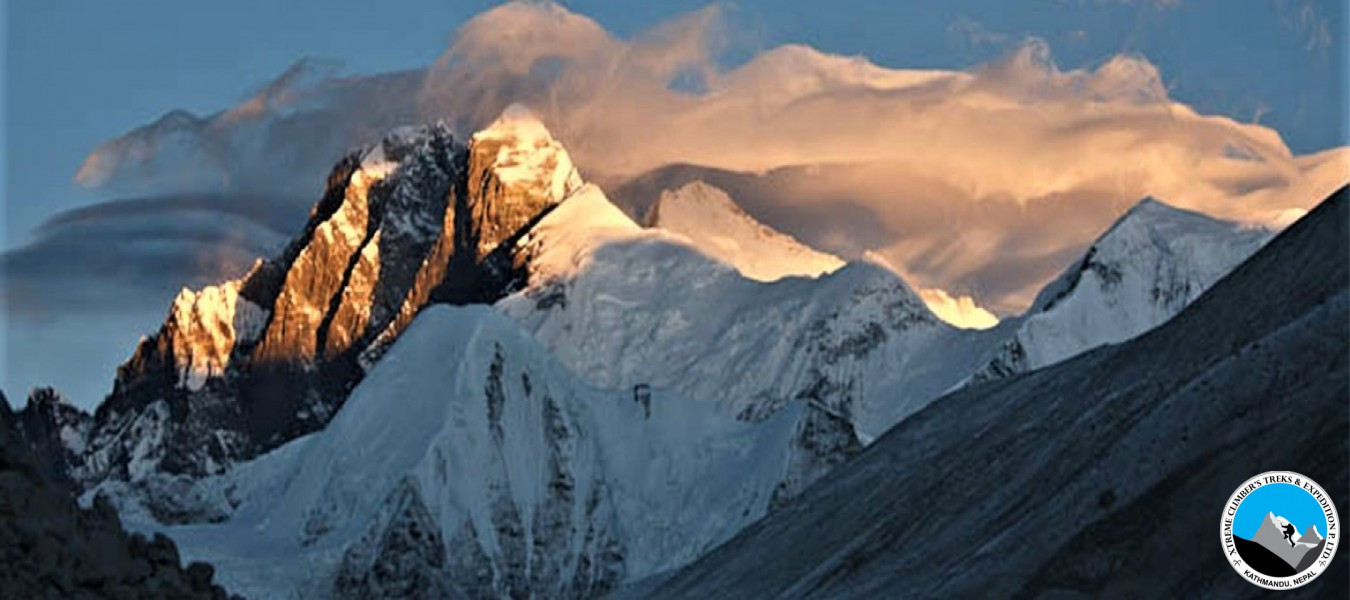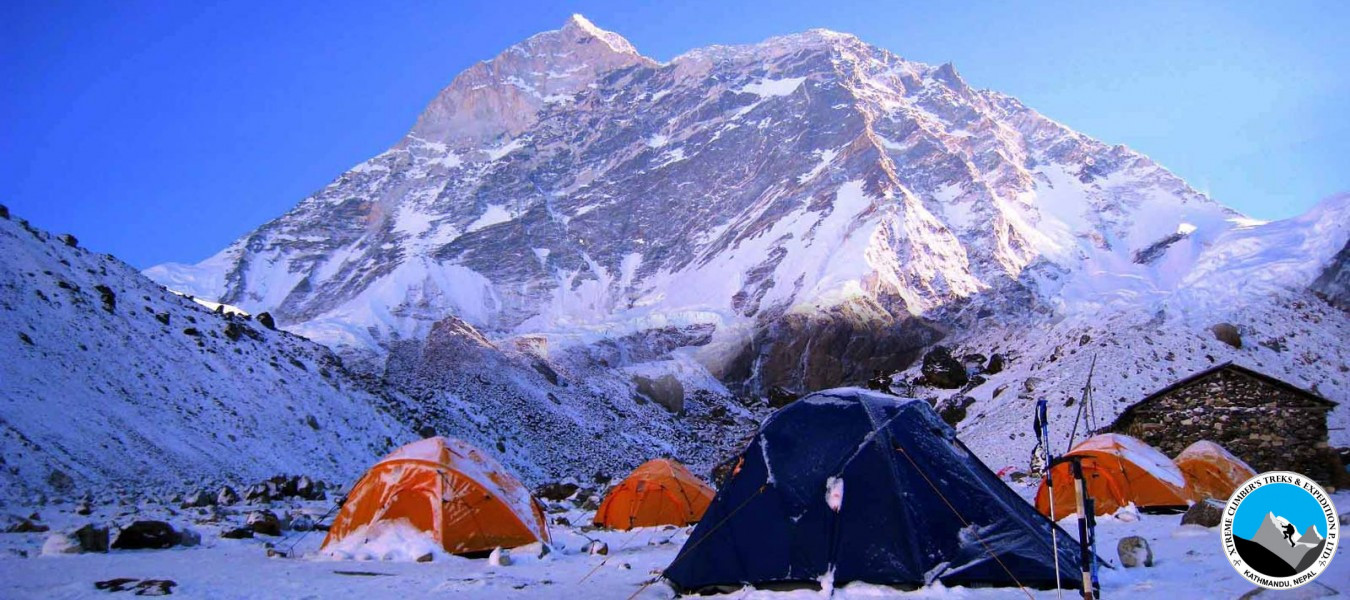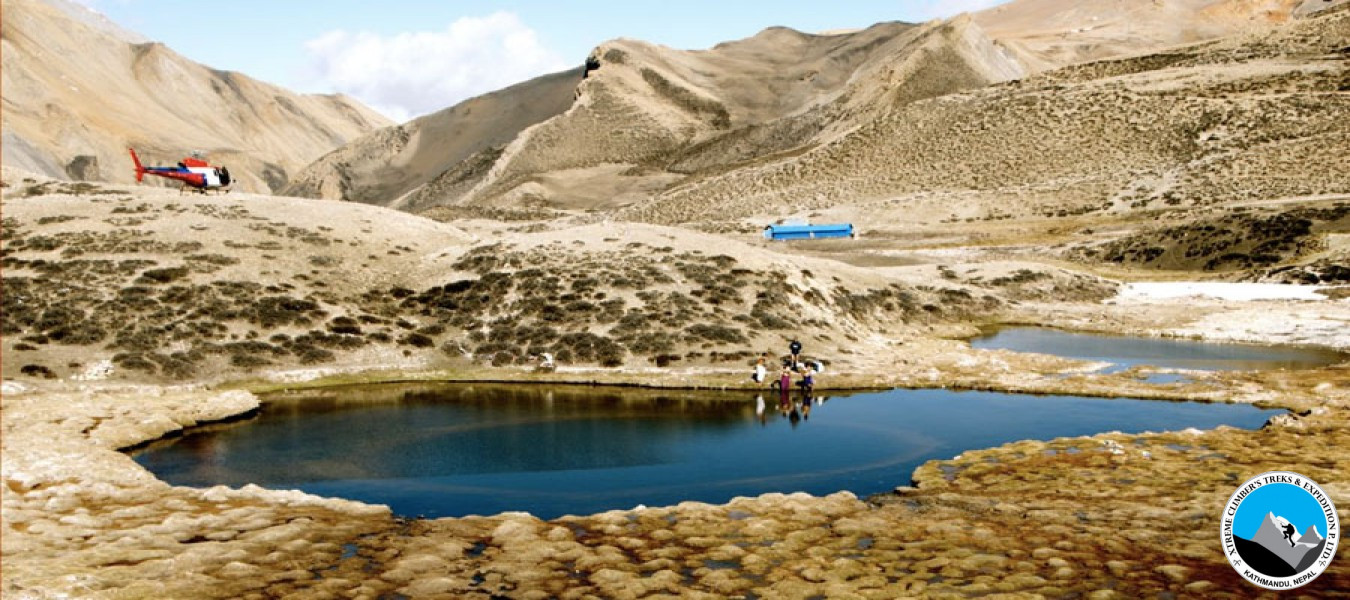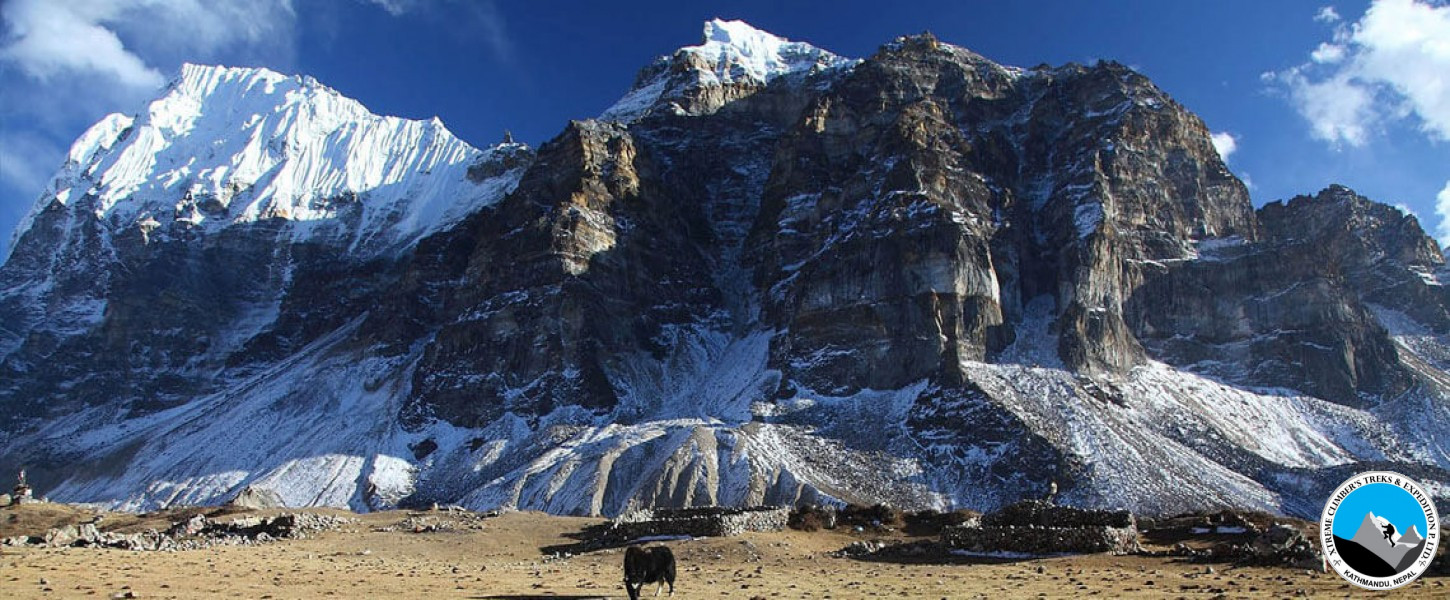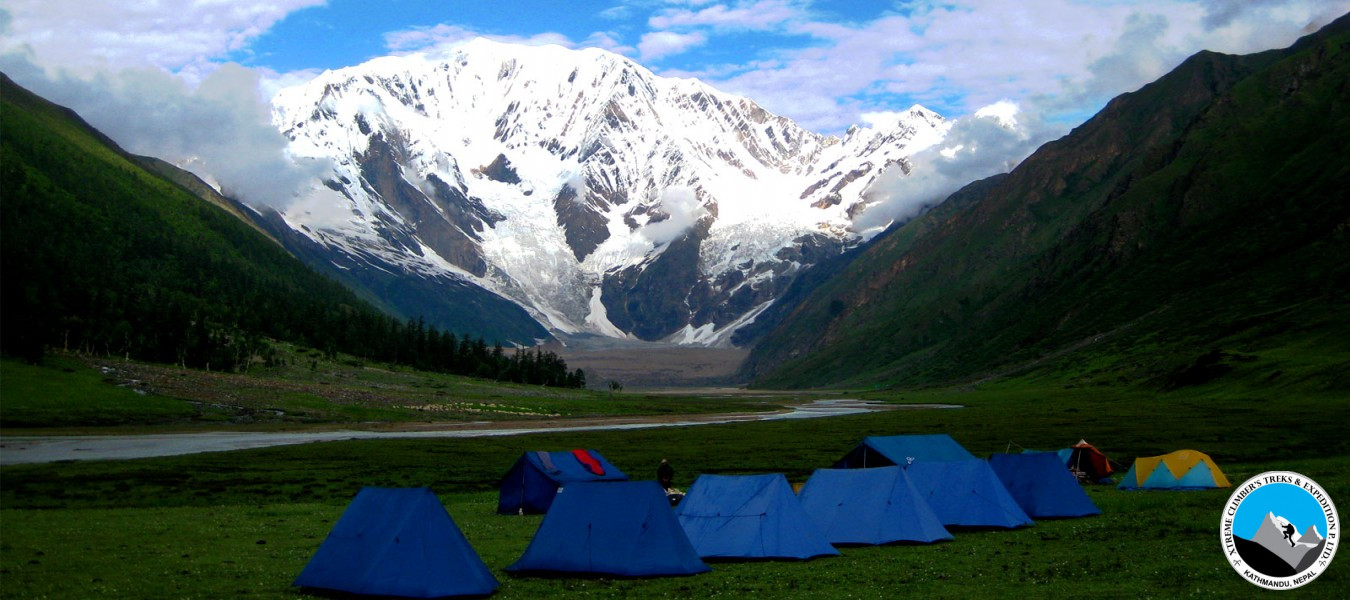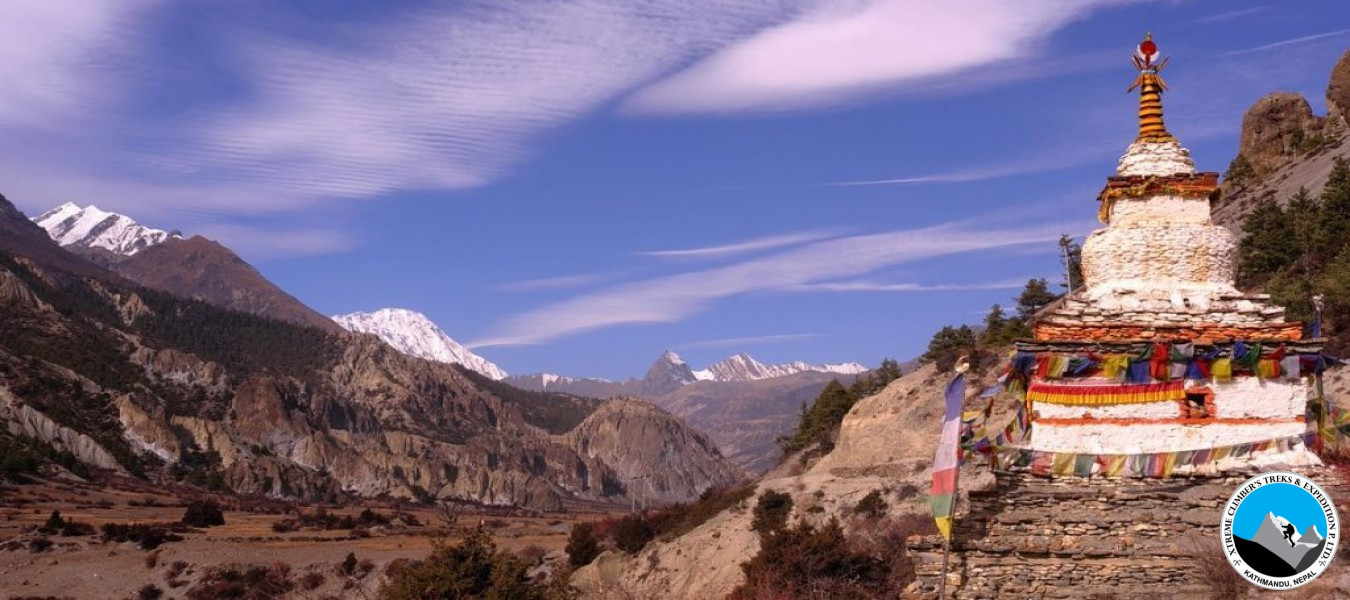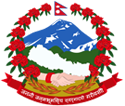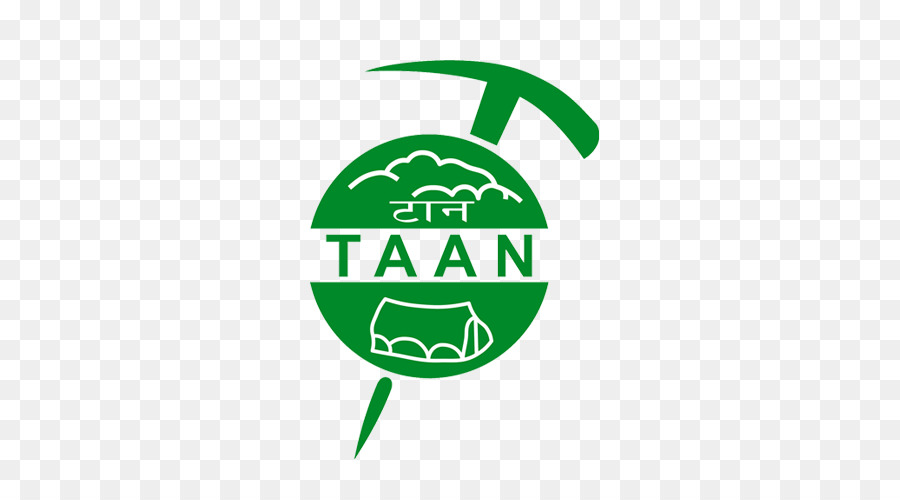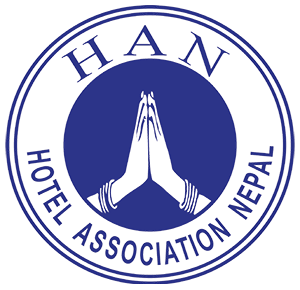MUSTANG DAMODAR KUND Lake Trek is another famous trekking destination in Upper Mustang which is famous for both Buddhist and Hindu religion followers, Situated rain shadow of north of Annapurna range of High Himalayas. Situated on elevation of 4890 meters the Damodar Kunda is cold and windy place. April to September would be best time to explore this forbidden kingdom. Every year on the full moon of August, the festival takes place. Hundreds of Hindu and Buddhist devotees gather here. Mainly Hindus from India dominates the trail. Most of them also prefer a charter helicopter from Pokhara or Kathmandu. We also organize fixed departure trip for Damodar Kunda Trek, every month of August. Offers superb panoramic views whole Annapurna range, lush valleys, beautiful landscape, Tibetan monasteries. The views are great from some viewpoints a bit higher than the lakes, just a short climb up some of the hills. The Tibetan plateau and Damodar Himal (6706m) with 65 peaks in this Himalayan range to the north and the Annapurna Himalayan massive to the south. Damodar Kunda has own history in the column of Barah Puran; Lord Krishna has said that who pays a visit to this Kunda (Lake) and takes a deep-bath, they will be freed from all the sin. It is also mentioned in Puran that Two sons of Kubers (God of Wealth) were suffering from their wrong doing & amp sin, which they did in their previous birth but lord Krishna suggested them to take bath in Damodar Kunda and immediately after taking bath in this Kunda they were released from all their sin.
Damodar Himal, mountain range in Nepal Himalayas, in MUSTANG district. Includes Muktinath Himal (6,706m), Bhrikuti Peak (6,364m). There are 65 peaks in this Himal range. MARSYANGDI River takes origin from this range.
Download Pdf
-
March - June / September-November
-
Kathmandu (Capital of Nepal)
-
Hotel in Kathmandu on BB plan / Mountain lodge (tea house) in Trekking.
-
Domestic airplane and tourist vehicles
-
Breakfast and welcome or farewell dinner in Kathmandu / Full board in Trekking (Breakfast, Lunch & Dinner).
-
Helicopter : AS 350 B3E (H125)
- Capacity : 1 pilot + 6 Passengers
- Max takeoff weight : 2250 kg
- Power Plant : 1 Turbomeca Arriel 2D
- Service Sling : 23000 Ft
- Rate of Climb : 1818 fpm
- Cruising Speed : 137 knots
- Call Sign: 9N – AKP & 9N AKG
-
Day 1 : Arrive at Tribhuvan International Airport (KTM) Kathmandu
-
Day 2 : Kathmandu: Sightseeing and Trek Preparation.
Meal includes:Breakfast
-
Day 3 : Kathmandu (1300m) to Pokhara [900m] by bus, 6 hrs or by fly, 30 min.
Meal includes:Breakfast/Lunch/Dinner
-
Day 4 : Fly Pokhara to Jomsom [2720m], then trek to Kagbeni (2800m), 3-4 hrs.
Meal includes:Breakfast/Lunch/Dinner
-
Day 5 : Kagbeni to Chele [3050m] 4-5 Hrs.
Meal includes:Breakfast/Lunch/Dinner
-
Day 6 : Chele to Syangboche [3475m/11,398ft] 6-7 Hrs.
Meal includes:Breakfast/Lunch/Dinner
-
Day 7 : Syangboche to Ghaymi [3520m] 5-6 Hrs.
Meal includes:Breakfast/Lunch/Dinner
-
Day 8 : Ghaymi to Charang [3500m] 4-5 Hrs.
Meal includes:Breakfast/Lunch/Dinner
-
Day 9 : Charang to Lo Manthang [3700m] 5-6 Hrs.
Meal includes:Breakfast/Lunch/Dinner
-
Day 10 : Exploration Day Lo Manthang [3700m].
Meal includes:Breakfast/Lunch/Dinner
-
Day 11 : Yara to Ghuma Thanti [4800m] 6-7 Hrs.
Meal includes:Breakfast/Lunch/Dinner
-
Day 12 : Ghuma Thanti to Damodar Kunda [4890m] 6-7 Hrs.
Meal includes:Breakfast/Lunch/Dinner
-
Day 13 : Damodar Kunda Exploration [4890m].
Meal includes:Breakfast/Lunch/Dinner
-
Day 14 : Damodar Kunda to Ghuma Thanti [4800m] 5-6 Hrs.
Meal includes:Breakfast/Lunch/Dinner
-
Day 15 : Ghuma Thanti to Yara [3900m] 6-7 Hrs.
Meal includes:Breakfast/Lunch/Dinner
-
Day 16 : Yara to Tange [3240m] 6-7 Hrs.
Meal includes:Breakfast/Lunch/Dinner
-
Day 17 : Tange to Tetang [3040m] 5-6 Hrs.
Meal includes:Breakfast/Lunch/Dinner
-
Day 18 : Tetang to Muktinath [3700m] 5-6 Hrs.
Meal includes:Breakfast/Lunch/Dinner
-
Day 19 : Muktinath to Jomsom [[2700m/8856ft] 5-6 Hrs.
Meal includes:Breakfast/Lunch/Dinner
-
Day 20 : Fly to Pokhara.
Meal includes:Breakfas
-
Day 21 : Drive or fly back to Kathmandu.
Meal includes:Breakfast/Lunch/Dinner
-
Day 22 : Transfer to Airport
Meal Includes: Breakfast
Note: The above itinerary can be tailor made as per client's request, we can make the itinerary shorter/Longer by cutting or adding days, People who have longer time can add the White Water Rafting, Jungle safari tour in Chitwan National park, Paragliding and Zeep Flyer in Pokhara and other extra activities so feel free to write us on info@xtremeclimbers.com for further details.How to book a trip ?
- Explore the Himalayan Kingdom.
- Interesting and picturesque places.
- Buddhist Monastery, Chorten and Mani walls.
- Tibetan life-style in refugee camps and the mystic Landscape.
- Snow capped Himalayan peaks.
- The famous Damodar Kunda, possible to festival observe if trip on full moon of August.
- Ancient and isolated villages.
- Mixed culture and purely Tibetan cultural.
- The pilgrimage site of Muktinath.
- Lake valley of Pokhara.
Full Board Service Includes
- Airport -Hotel-Airport transfer by private vehicle
- Twin sharing 3*** accommodation with breakfast in Kathmandu
- Twin Sharing 3*** accommodation with breakfast in Pokhara
- VE-25 North Face tented accommodation during camping (Two clients get one two men tent)
- Our own cooked meals during the trek (three time a day Veg /Non veg) in Camping
- Thuraya SAT Phone (Emergency use only)
- Radio Walki Talki
- A cap entry permit and applicable trekking permits
- Staff (cook, helper, Guide and other supporter porters/donkeys
- Entire necessary Kitchen, Dining, Toilet Tent’s and guide Sherpa tent
- Drinks in campsite (Hot Chocolate, Special Coffee and Tea)
- Government license holder highly experienced trekking guide
- Special Trekking Permit US$ 500 per person for 10 days
- Guide Air tickets and airport taxes for Pokhara – Jomsom - Pokhara
- Way Expenses to bring food, kitchenware, equipments to Jomsom and back
- Kathmandu/Pokhara/Kathmandu Flight or land transportation by Tourist bus. [As per required]
- Pokhara to Jomsom and Pokhara to Jomsom flight tickets for clients and Guide
- Two days sightseeing tour with English speaking tour guide
- Sightseeing entry fees during the sightseeing
- All local government taxes and our service charge
Cost and payment details
The cost is depending on group size, affected due to the requirement of number of guides and porters, requisite of Hotel in Kathmandu, method of land/air transport. The itinerary is changeable and modifiable as per needs and time frame of trekkers. Cost will be re calculated if the itinerary is changed or modified. Additional activities may be added as per trekkers request with appropriate additional cost. For Total Tour cost EMAIL US, we will send you within 24 hours as your requirements.
Why we dont't include cost in our website?
NOTE: To provide you service in reasonable cost and attempt to address your each requirement Xtreme Climbers desired to provide you with some information which directly affects the cost and also helps us breakdown the cost. That is why we have decided to clarify our customers that due to the following reasons mentioned below we have not included the cost of each package in the company website.
-
Climbing season: The climbing permit royalty cost for mountain will be different during Spring and Autumn season. Normally most of the climbers climbs Himalayas in the Spring season. Climbing permit during Autumn will be 50% less than the spring season.
-
The cost of the trip depends on Number of persons joining in group for High expedition or Mountain Climbing including number of climbers, non-climber, base camp supporters, medical doctors, The number of climbing Sherpa guides, high altitude porters, kitchen crew, mode of transport you prefer and many other factors can affect the cost of the trip. Alpine climbing guide as well as the category of the hotel accommodation and the facilities that you aspire in the mountains affect the cost.
-
We operate the High Expeditions, Peak Climbing in full arrangement package and basic arrangement service (full board or base camp service) which directly affects the expedition cost.
-
Request numbers of oxygen, mask regulators and the brands the clients require
-
The itinerary may be changed after reaching an understanding between the agency and the client. Other activities could be added or reduced as per the client's request before processing the trip. Price for reduced activities could be deducted and additional activities could be added in mutual understanding.
-
Either you want to operate this expedition as international group joining basics of Xtreme Climbers or individual (private arrangement) expedition.
-
Type of high camp food that clients require. Any specialized food that has to be ordered from foreign countries will be costlier compared to the one available here.
-
Either any of the climbers intend to attempt any world records? If so, do they require special services or equipment?
Due to the reasons mentioned above we would like to discuss with our client directly before offering the cost. So please feel free to drop your queries in info@xtremeclimbers.com or login to www.xtremeclimbers.com for any information about your selected package.
Full Board Service Excludes
- Travel insurance.
- International air fare to and from Nepal.
- Nepal Tourist Visa fees.
- Items and expenses of personal nature.
- Any meals in Kathmandu and Pokhara other than breakfast.
- Any kind of alcoholic drinks, cold drinks, snacks, laundry, phone call, internet.
- Personal Trekking Equipments.
- Emergency Evacuation (Helicopter Rescue).
- Any costs which arise due to a change of the itinerary, because of landslides, domestic flight delays,political disturbance, and strikes etc.
- Any other costs that is not mentioned in the cost included.
- Horse renting and additional porters during the trek.
- Tips for guide, porters, driver.
Cost and payment details
The cost is depending on group size, affected due to the requirement of number of guides and porters, requisite of Hotel in Kathmandu, method of land/air transport. The itinerary is changeable and modifiable as per needs and time frame of trekkers. Cost will be re calculated if the itinerary is changed or modified. Additional activities may be added as per trekkers request with appropriate additional cost. For Total Tour cost EMAIL US, we will send you within 24 hours as your requirements.
Altitude Sickness
Acute Mountain Sickness (AMS) is common at high altitudes sickness. In general may occur when people ascend too quickly normally in altitudes of over 3000 m. The symptoms of altitude sickness are due to lower air pressure at high altitudes, which results in lower oxygen levels as you breathe the air in. The air is under less pressure and this makes it harder for your body to get the oxygen out of the air and into the circulation. It's this extra strain on the body that causes altitude sickness.
Symptoms tend to be worse at night and include headache, dizziness, and lethargy, loss of appetite, nausea, breathlessness and irritability. Difficulty sleeping is another common symptom.
The major symptoms of altitude sickness
Initial symptoms
- Periods of sleeplessness
- Runny nose.
- Extra tiredness
- Occasional loss of appetite
- Feeling laziness
- Wish to vomiting
- Periodic breathing
Above are normal symptoms which may occur into your body that you should not be worried. Every trekker will experience some or all of these, no matter how slowly they ascend.
Advance symptoms
- Headache and vomiting
- Dizziness
- Racing heartbeat
- Exhaustion
- Nausea
- Diarrhoea
- Loss of apatite
- Weakness
- Hard to breath
- Extra tired
- Dry Raspy cough
- Sleeplessness
When above symptoms will occur into your body, these symptoms usually resolve by spending one or two extra nights at the same altitude or using medicine. Even you are resting at the same altitude or using medicine, if symptoms are becoming worse, then it is necessary to descend.
Serious Symptoms
- Worsening headache and vomiting
- Swelling of hands and face
- Reduced urine output
- Walking with a staggering gait
- Confusion
- Increased tiredness
- Breathing irregularity
- Visual hallucinations (seeing things that are not real)
- Changes in the ability to think
- Changes in normal behavior
If above serious symptoms will occur into your body, these extremely dangerous symptoms are called High Altitude Cerebral Edema (or HACE). They can lead to unconsciousness and death within 12 hours. Increasing shortness of breath, cough and tiredness may also be signs of High Altitude Pulmonary Edema or HAPE. HAPE can also be rapidly fatal if ignored.
To prevent acute mountain sickness:
- If possible, don't fly or drive to high altitude. Start below 3,000 metres (10,000 feet) and walk up.
- If you do fly or drive, do not overexert yourself or move higher for the first 24 hours.
- If you go above 3,000 metres (10,000 feet), only increase your altitude by 350 to 500 metres (1,000 feet) per day
- Climb high and sleep low! You can climb more than 300 to 500 metres in a day as long as you come back down and sleep at a lower altitude.
- If you begin to show symptoms of moderate altitude sickness, don't go higher until symptoms decrease.
- Drink plenty of water, tea or juice etc (at least three to 4 liters per day). Urine output should be copious and clear to pale yellow.
- Eat high-carbohydrate foods (rice, pasta, cereal) for more energy.
- Take it easy and don't overexert yourself when you first get up to altitude. But, light activity during the day is better than sleeping because respiration decreases during sleep, exacerbating the symptoms.
- Avoid alcohol as it may increase the risk of dehydration, and don't smoke.
- Don't push yourself when climbing up to passes, rather take plenty of breaks.
- Avoid taking sleeping pills.
- Avoid active movements and try to relax in the first one or two days upon arrival at the high altitude areas.
- Bring adequate medicine.
- If nothing else works, return to the areas with the lower elevation.
- Allow sufficient time for acclimatization (After 3000 meters).
- Don’t make rapid Ascent. Don’t go too far too fast.
- Do not trek/travel alone, take guide/porter.
- Follow the advice from your guide, hotel, local, guide book.
- Descent if mild symptoms rapidly getting worse.
- Never leave or descent sick person along.
- Avoid getting cold.
- Take an easy and comfortable trekking route even if its longer
Medicine:
Following is a list of items you should consider including in your medical kit - consult your pharmacist for brands available in your country.
- Aspirin or paracetamol - for pain or fever
- Antihistamine - for allergies, eg hay fever; to ease the itch from insect bites or stings; and to prevent motion sickness.
- Antibiotics consider including these if you're traveling well off the beaten track' see your doctor, as they must be prescribed, and carry the prescription with you.
- Loperamides or Diphenoxylate 'blockers' for diarrhea' Prochlorperazine or metaclopramide for nausea and vomiting.
- Rehydration mixture to prevent dehydration, eg due to severe diarrhea; particularly important when traveling with children.
- Insect repellent, sunscreen, lip balm and eye drops.
- Calamine lotion, sting relief spray or aloe vera-to ease irritation from sunburn and insect bites or stings.
- Antifungal cream or powder - for fungal skin infections and thrush.
- Antiseptic, such as povidone-iodine for cuts and grazes.
- Bandages, band-aids or plasters and other would dressings.
- Scissors, tweezers and a thermometer (note that mercury thermometers are prohibited by airlines)
- Cold and Flu tablets, throat lozenges and nasal decongestant.
- Multivitamines - consider for long trips, when dietary vitamin intake may be inadequate.
Note: We have guides trained at the High Altitude Medical Training Center. Our staff is very experienced in dealing with the effects of higher altitudes. As they are natives of Nepal, they easily acclimatize and therefore can care for their clients. They are equipped with necessary medical supplies and will assist you with basic first aid treatment. We design our tours to ensure clients are ready for high altitude, and arrange alternative itineraries for those at risk
Insurance
Travel insurance is compulsory for all Clients undertaking any tour. It should provide adequate protection for the full duration of the tour to cover personal injury, medical expenses, repatriation expenses, helicopter evacuation, loss of luggage, etc.
For your kind information, we would like to give a list of the insurance companies, please go through the links below:
Footwear
| Trekking Boot |
1 Pair |
| Thick Socks |
4 Pairs |
| Light Socks |
3 Pairs |
| Camp Shoes |
1 Pair |
| Sandals |
1 Pair |
Other Equipments
| Sleeping Bag(4seasons) |
1 |
| Down Jacket |
1 |
| Daypack |
1 |
| Water Bottle |
1 |
| Sun Cream |
|
| Sunglasses |
|
| Flashlight With Spare Bulbs, Batteries, Lip Salve, Gaiters. |
|
Clothing
| Down Or Fiber Filled Waterproof Jacket And Trousers |
1 |
| Fleece Jacket Or Pullover |
1 |
| Warm Cotton Trousers |
2 Pairs |
| Shirts And T-Shirts |
4 Pieces |
| Lightweight Cotton Long Pants |
3 Pairs |
| Long Under Wear |
2 Pieces |
| Short Under Wear |
4 Pieces |
| Sun Hat Or Scarf |
1 |
| Woolen Hat |
1 |
| Sunglasses |
1 |
| Lightweight Gloves |
1 |
| Rain Coat |
1 |
| Heavyweight Gloves Or Mittens With A Waterproof |
1 |
Optional
| Insect Repellent |
| Toilet Articles |
| Note Book & Pen |
| Toilet Roll |
| Laundry Soap |
| Pocket Knife |
| Towel |
| Sewing Kit |
| Plasters |
| Binoculars |
| Camera |
| Film |
| Cards And Personal Medical Kit |
-
What happens if there is an emergency?
-
What are health requirements to visit Nepal?
-
Does your company arrange domestic and international flight and other services?
-
What if I arrive early or depart late? Can you arrange extra night lodging? Is there a single room option?
-
What happens if I need to leave the trip early?
See More
